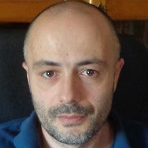Additive Manufacturing for Architectural and Structural Design
A special issue of Applied Sciences (ISSN 2076-3417). This special issue belongs to the section "Additive Manufacturing Technologies".
Deadline for manuscript submissions: closed (15 January 2024) | Viewed by 13587
Special Issue Editors
Interests: topology optimisation; additive manufacturing; machine learning; artificial neural networks; artificial intelligence; structural engineering; civil engineering; bridge engineering; building information modelling; bayesian inference; probabilistic analyses; data-driven engineering methods; structural health monitoring; seismic design; steel structures; energy
Special Issues, Collections and Topics in MDPI journals
Interests: design for additive manufacturing; topology optimization; finite element analysis for composite structures; intelligent algorithms; fatigue damage
Interests: structural analysis and design; numerical modelling and optimization; concrete structures; structural materials; building systems
* Associate Professor with Aggregation
Special Issues, Collections and Topics in MDPI journals
Special Issue Information
Dear Colleagues,
While additive manufacturing (AM) has successfully been employed for some years in advanced industries, such as aerospace, automobile, product design and materials, only recently has it acquired the maturity to proliferate in the heterogeneous construction industry.
For thriving in this sector, with a yearly value of over USD 10 trillion, both profuse fundamental and applied research are still significantly in need. Specifically, materials design—including steel and other alloys manufacturing with a growing number of techniques, concrete 3D printing, new composites, polymers and multimaterial synthesis—but also quality control and testing, design methods, topology optimisation, code development, software development, CAD and BIM integration, practical and embracing methodologies, advanced computational methods, automation and robotics in construction, aesthetics and architectural design, construction yards organisation, large-scale prefabrication, energy, environment and sustainability are vectors of a complex space, requiring individual developments to unleash AM potential, as well as multidisciplinary perspectives.
This Special Issue is open for research articles, reports and systematic reviews which provide innovative contributions, depict case-studies or consolidate the body of knowledge on how structural and architectural design can evolve to account for AM specificity, challenges and capabilities in the aforementioned topics. Intersectoral works are highly encouraged.
Dr. Tiago Pinto Ribeiro
Dr. Yun-Fei Fu
Dr. Luís Filipe Almeida Bernardo
Guest Editors
Manuscript Submission Information
Manuscripts should be submitted online at www.mdpi.com by registering and logging in to this website. Once you are registered, click here to go to the submission form. Manuscripts can be submitted until the deadline. All submissions that pass pre-check are peer-reviewed. Accepted papers will be published continuously in the journal (as soon as accepted) and will be listed together on the special issue website. Research articles, review articles as well as short communications are invited. For planned papers, a title and short abstract (about 100 words) can be sent to the Editorial Office for announcement on this website.
Submitted manuscripts should not have been published previously, nor be under consideration for publication elsewhere (except conference proceedings papers). All manuscripts are thoroughly refereed through a single-blind peer-review process. A guide for authors and other relevant information for submission of manuscripts is available on the Instructions for Authors page. Applied Sciences is an international peer-reviewed open access semimonthly journal published by MDPI.
Please visit the Instructions for Authors page before submitting a manuscript. The Article Processing Charge (APC) for publication in this open access journal is 2400 CHF (Swiss Francs). Submitted papers should be well formatted and use good English. Authors may use MDPI's English editing service prior to publication or during author revisions.
Keywords
- additive manufacturing
- topology optimisation
- structural design
- architectural design
- design methods
- automation in construction
- 3D-printing
- mathematical and numerical models
- smooth design
- engineering software







